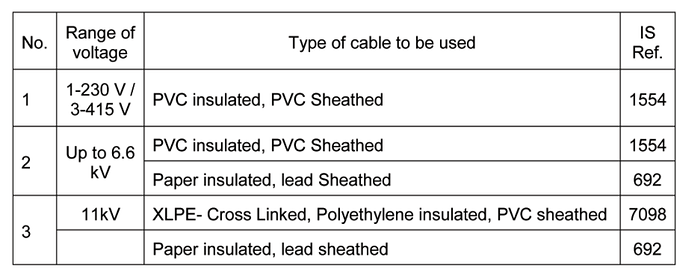The flow of power from transformer to switchgear and from there to starter and to motor and other related equipment like capacitors are through power cables.
Types of Electrical Cables
The below table gives information on cables for different voltages.
Source: CPHEEO, 1993
The size of the cable should be so selected that the total drop in voltage, when calculated as the product of current and the resistance of the cable should not exceed 3%.
Values of the resistance of the cable are available from cable-manufacturers.
Selecting the Cable Size
The following points should be considered when selecting the size of the cable:
• The current carrying capacity should be appropriate for the lowest voltage, the lowest power factor and the worst condition of installation that is, duct-condition.
• The cable should also be suitable for carrying the short circuit current for the duration of the fault. The duration of the fault should preferably be restricted to 0.1 sec. by proper relay setting.
• Appropriate rating factors should be applied when cables are laid in- group (parallel) and/or laid below ground.
• Suitable trenches or racks should be provided for laying cables The following O&M tasks should be implemented:
• Measure insulation resistance between cables and the earth • Visually observe deterioration, corrosion and discolouration
